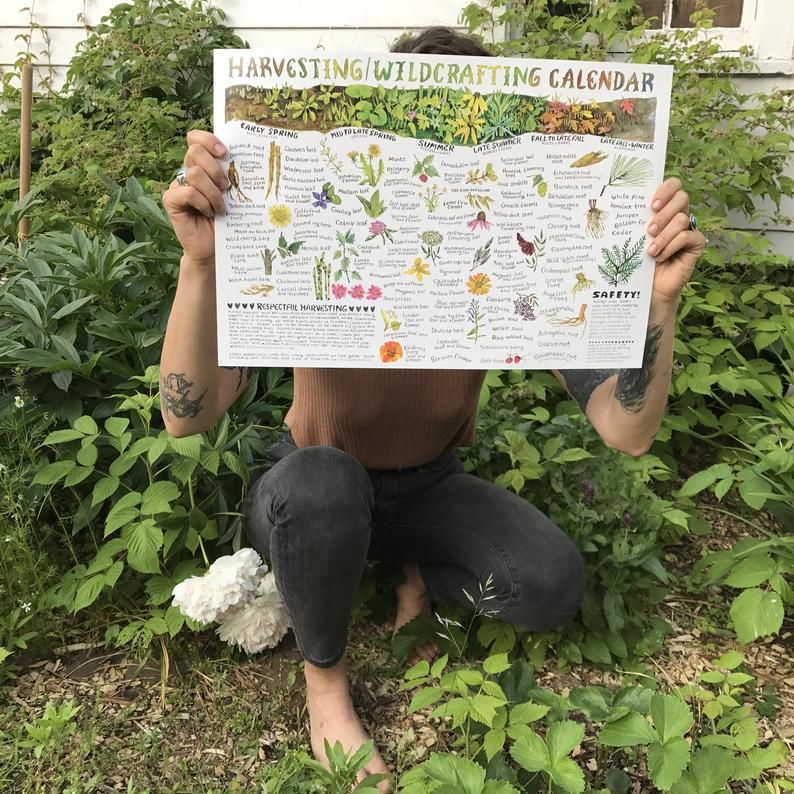Wildcrafting is a popular activity among nature enthusiasts, homesteaders, and those looking to connect with the natural world. It involves gathering wild plants, herbs, and fungi for various purposes such as medicinal use, culinary delights, or crafting. While it can be a rewarding and sustainable practice, it is important to keep safety in mind when venturing into the wilderness. In this article, we will explore some essential precautions to ensure your wildcrafting adventures are both enjoyable and safe.
1. Educate Yourself: Before embarking on any wildcrafting expedition, take the time to educate yourself about the local flora and fauna. Familiarize yourself with plant identification guides specific to your region and learn about any poisonous look-alikes that may exist. Joining local naturalist groups or attending workshops can also provide valuable knowledge from experienced foragers.
2. Respect Nature: When practicing wildcrafting, always remember that you are a visitor in nature’s domain. Treat plants with respect by harvesting responsibly; only take what you need and leave enough behind for regrowth and sustenance of wildlife.
3. Obtain Legal Permission: Ensure that you have permission before entering public lands or private properties for wildcrafting purposes. Some areas may have restrictions on harvesting certain species or require permits; check with local authorities or landowners beforehand.
4. Dress Appropriately: Dress appropriately for outdoor activities by wearing long-sleeved shirts, pants made of durable materials (to protect against scratches), sturdy boots suitable for hiking over uneven terrain, and hats to shield from the sun.
5. Use Protective Gear: Depending on the location and plants you are harvesting, additional protective gear may be necessary. Gloves will protect your hands from thorns or irritants found on certain plants while goggles can safeguard your eyes from airborne particles when handling dried herbs.
6. Carry Essential Tools: Always bring along essential tools like pruning shears or scissors specifically designed for plant harvesting. These tools will enable you to cleanly and efficiently gather the plants without causing any damage to them or the surrounding ecosystem.
7. Avoid Contamination: While gathering wild plants, be cautious of contaminated areas such as roadsides, industrial sites, or areas sprayed with pesticides. These locations may expose plants to harmful chemicals that can contaminate your harvest and pose health risks.
8. Be Aware of Allergies: If you have known allergies or sensitivities, be mindful of any potential reactions certain plants may cause. Familiarize yourself with common allergenic species and take necessary precautions such as wearing a face mask when handling them.
9. Don’t Overharvest: It is crucial not to overharvest wild plant populations. Only collect a small percentage from each area and avoid taking every available specimen in one location. This ensures the sustainability of the population for future generations and maintains biodiversity in the ecosystem.
10. Proper Plant Collection Techniques: When gathering wild plants, use proper collection techniques to minimize damage and promote regrowth. Cut stems at an angle above leaf nodes rather than pulling up entire roots unless it is necessary for specific purposes like herbal medicine preparation.
11. Preserve Properly: After collecting your wildcrafted treasures, it’s important to preserve them properly for later use while maintaining their quality and potency. Drying herbs upside down in a well-ventilated area away from direct sunlight is a common method used by many herbalists.
12. Labeling and Storage: Once dried, store your harvested plants in labeled containers made of glass or food-grade plastic to maintain freshness and prevent contamination from pests or moisture.
13. Seek Expert Guidance: If you are uncertain about any plant’s identification or usage, seek guidance from experienced practitioners before using it medicinally or adding it to your culinary creations.
14.Prepare for Emergencies: Lastly, always be prepared for emergencies when venturing into remote areas for wildcrafting. Carry a first aid kit, have a basic knowledge of wilderness survival skills, and inform someone about your plans or travel companions.
By following these safety precautions, you can enjoy the bounties of nature through wildcrafting while ensuring the well-being of both yourself and the environment. Remember that responsible foraging practices not only protect plant populations but also contribute to sustainable living and cultural heritage preservation. Happy wildcrafting!


Leave a comment